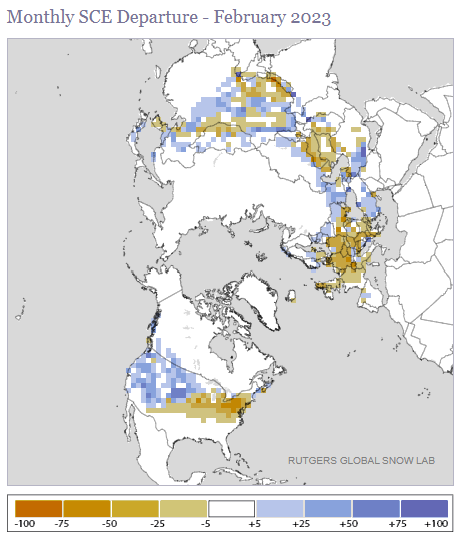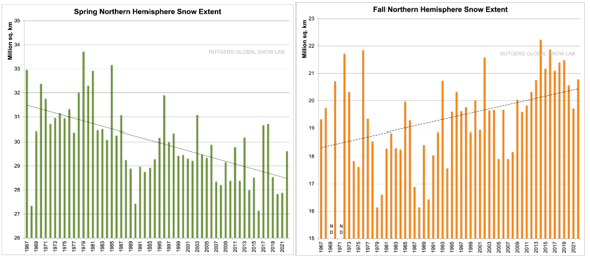It just doesn’t snow like it used to, right? Well, yes and no. More like, it just doesn’t snow when it used to. Spring snow cover in the northern hemisphere is down compared to the 1970s. But fall and winter snow cover is up. How do we know? We’re not just going from memory because people are notorious for having weather amnesia. Instead we are going by this week’s provider of #coolclimatedata, the Rutgers University Snow Lab, which provides easy-to-navigate- records of Northern Hemisphere snow cover. Here, for instance, is the Snow Cover Extent for February 2023, expressed as deviations from the 1981-2010 mean:

Eastern North America is down compared to average while the west is mostly up. Over on the Eurasia side you can see the mix. What about trends?
Well, here’s the Northern Hemisphere average snow extent in millions of square km annually from 1967 to the present:

How odd. It’s sloping (slightly) up. We thought children weren’t going to know what snow is anymore. Spring and fall meanwhile are following opposite trends:

So, like we say, it’s not that there’s less snow in winter, instead there’s more in the fall, a bit more in winter and less in the spring. Climate alarmists to the contrary, winter is alive and well in the Northern Hemisphere. Which is pretty cool.


